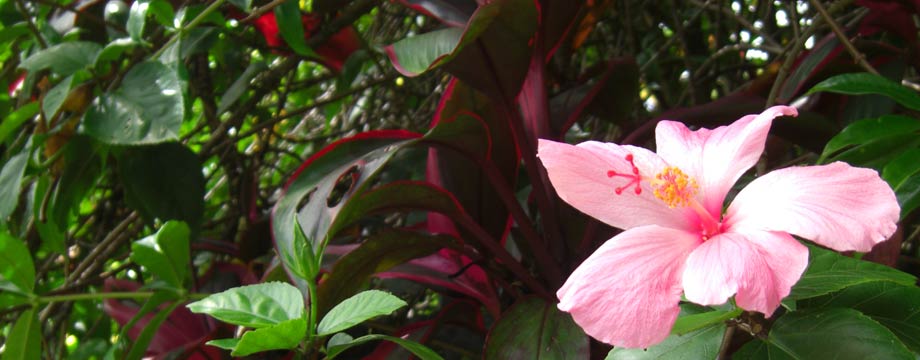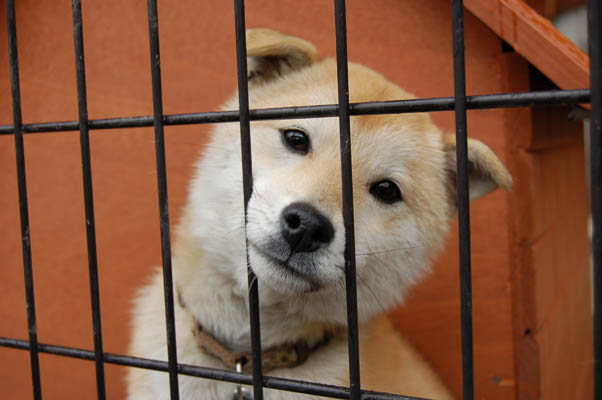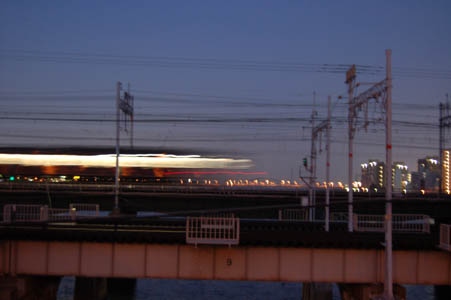In Umeda, demolition and construction are an ongoning process, like birth and death. Cranes stretch towards the skyline like a pod of brotosaurus on the plains of our primordial Earth. Come to think of it, the planes flying towards Osaka airport kind of look like archeopteri…
Crane Technique
Genki Drinks
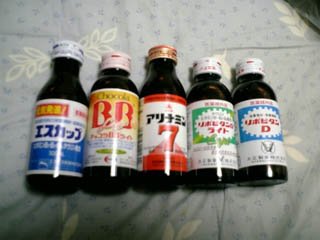
Taro bought me an assortment of energy drinks/vitamin elixers. I’m thinking of drinking them all in one go…
I used to think that mixing energy drinks and spirits would be a good idea, but this is not true. Though it often makes for nights charged full of fun and great stories, the events of a night involving this combination usually involve life-threatening situations or temporary loss of memory. The synergetic results are not a good idea under the best of circumstances.
Genki drinks by themselves can do wonders though. One time, I was sick with diarrhea and vomiting while riding the bus up to Hiroshima to go snowboarding with a bunch of friends. I woke up exhausted and deeply disappointed, questioning my ability to snowboard that day.
I crawled out of the bus and bought 3 genki drinks, downing them in quick succession, followed by a tuna mayo onigiri. Thanks to this combination I regained my strength and was able to board with no problem all day.
So what will I do with these genki drinks? I don’t know just yet, but I plan on using them in a medicinal context. Sometimes not having interesting stories is a good thing.
Leaving Japan/Going to California
Work finishes on Friday! Most people seem a bit more cheerful in the office now that the end is near, and this weekend should be a good time to celebrate this milestone with a party under the cherry blossoms. I may decide to go out even if it rains (a hanami party in the rain is truly underrated).
I’ve been in Japan for so long that I feel as comfortable over here as I did back at home. In spite of this, I’ve decided to return to Southern California. It will be nice to connect with old friends and relatives, and I am in dire need of a tan. The Japanese winter makes one pastier than a Canadian!
I wouldn’t mind living in Japan, and in fact, it’s still an option. However, if I were to do so, I wouldn’t want to continue being an ALT. Should I choose this path, I would first get my masters and then teach at a university.
As far as I can tell, the eikaiwa market (along with contracts for ALTs in the public school system) is slowly but steadily declining in regards to the quality of services provided and salary and benefits offered. If you are on the JET program, you are doing much better comparatively than those who came before you. If you are teaching in Japan and planning on staying, I highly recommend applying for JET (best-case scenario) so you don’t have to go through the hassle of working for a company (better-case scenario), a private or corporate eikaiwa company (worse-case scenario), or one of those notorious companies that have a high turnover rate of gaijin fresh off the plane (the worst-case scenario).
I’m planning on leaving on the 18th of April, but before that I will be taking a week long trip with my father around Kyushu. It will be nice to visit southern Japan again, the place that I consider my home away from home.
It will be nice to see everyone when I get back. See you soon!
Hit and run
These stickers are made by Japanese Tobacco (JT), who also runs a salt and tobacco museum up in Tokyo.
A few ads from a bygone era:
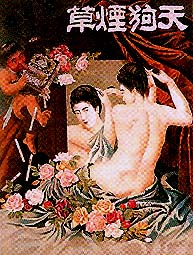
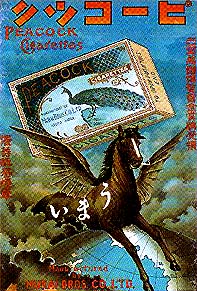
(from here)
Chayamachi Fishtank Diver
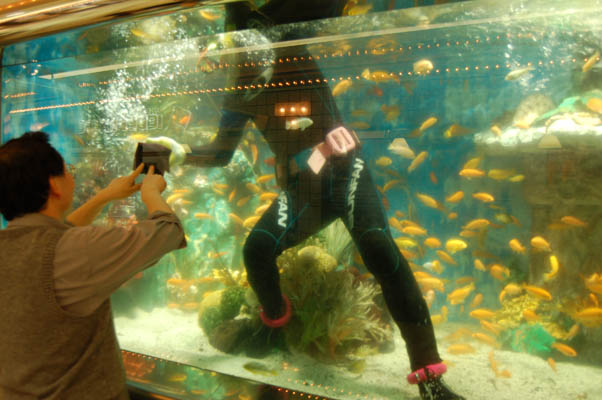
At first, I thought that the diver and his spotter were performing some sort of perfomance art, and they kind of were. Amazingly, no one stopped to watch him except for me.
This guy also has to jump into tanks with giant Amazon catfish, sharks, and cichlids. It amuses me that the colorful ciclid tank likely poses the greatest risk to this diver (though it wouldn’t be amusing if any harm actually did come to him).
Vernal Equinox Richard Pryor Story
Friend of mine just lit a cigarette on my stove, and he got too close to the flame. Hair still smoking, he asked “Oh, what happened?”. Now it stinks like burnt ass in my mini kitchen.

